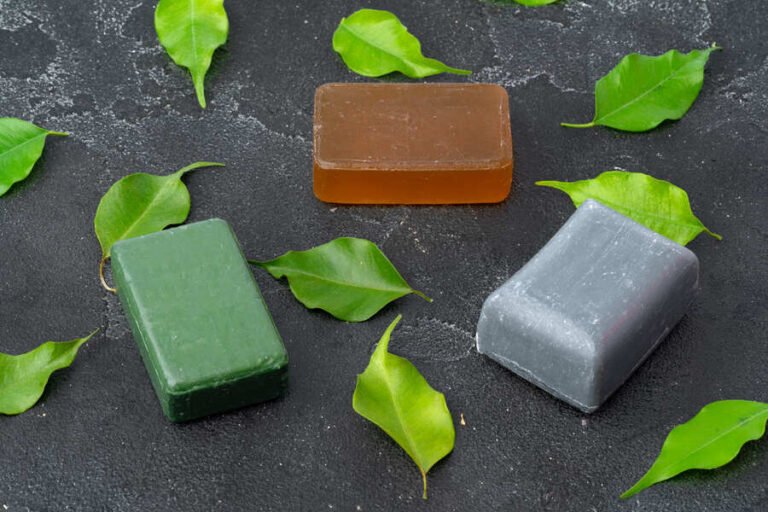Are you tired of wasting time and money on concealers that don't match your skin tone? Look no further!
In just five easy steps, we will help you find your perfect concealer shade. Imagine finally achieving a flawless complexion, effortlessly covering up those dark circles or acne scars.
With our expert guidance, you'll learn how to understand undertones, conduct a vein test, and use the color wheel to identify the right shade for your specific concerns.
Say goodbye to mismatched shades and hello to confidence! Let's get started.
Key Takeaways
- Understanding your undertones is crucial in finding the right concealer shade. Undertones can be determined through the vein test and the jewelry test.
- Color-correcting can be used to neutralize specific discolorations and blemishes. Choose a concealer with a base color that is opposite or complementary to the target color on the color wheel.
- Choose a concealer shade that matches your skin tone or is the closest to it. Consider getting a few shades to address different areas of your face.
- Swatch the concealer under natural light to see how it looks on your skin. Avoid relying on artificial lighting.
Understanding Undertones and Skin Tone
To understand your undertones and skin tone, you should familiarize yourself with the different shades and colors that complement your complexion. Choosing the right undertone shades is essential for achieving a natural and seamless look.
Warm undertones have a peach or golden-colored undertone, while neutral undertones are a mix of yellow and blue hues.
To identify the right shade for different skin concerns, you can use the color theory. Opposite colors on the color wheel cancel each other out when mixed, so choosing a concealer with a base color that's opposite or complementary to the target color can help neutralize and mask blemishes and discoloration.
Remember to swatch concealer under natural light to ensure the perfect match. By understanding your undertones and skin tone, you can confidently choose the right concealer shade for a flawless complexion.
Color Correcting and Concealing Blemishes
When color correcting and concealing blemishes, you can use specific techniques to achieve a flawless complexion. Color correcting techniques involve using concealers with specific pigments to neutralize and treat various skin problems. For example, green color correctors can help counteract redness, while peach or orange color correctors can help conceal dark circles.
It's important to choose the best concealer formulations for your specific needs. Liquid concealers are versatile and great for masking pimples, while cream concealers offer medium to full coverage and are excellent for concealing birthmarks or discolorations. Spot concealers are ideal for treating and masking blemishes, while cream to powder concealers provide heavyweight coverage with a lightweight texture.
Tips for Choosing the Right Concealer Shade
If you're unsure about your undertone, the beauty counter can provide assistance in finding the right concealer shade for you. Understanding your undertones is crucial in choosing the right shade.
Warm undertones have a peach or golden-colored undertone, while neutral undertones are a mix of yellow and blue hues, often seen in darker skin tones.
To correct discoloration, you can use color theory. Identify the color of the target areas with discoloration or blemishes, and choose a concealer with a base color that's opposite or complementary to the target color on the color wheel. This technique helps neutralize and mask blemishes and discoloration.
Swatching and Testing Concealer Shades
Have you considered swatching and testing different concealer shades to find the perfect match for your skin tone? Swatching and testing concealer shades is a crucial step in the process of finding the right concealer for you. Here are some techniques to help you effectively swatch and test different concealer shades:
- Apply a small amount of each concealer shade on your jawline or cheek under natural light. This will give you a better idea of how the shade will look on your face.
- Blend the concealer into your skin using a brush, sponge, or clean fingers. This will help you determine how well the concealer blends and whether it matches your skin tone seamlessly.
- Pay attention to the coverage and finish of each concealer shade. Some formulations, like liquid concealers, offer a more natural, dewy finish, while others, like cream concealers, provide a fuller coverage with a matte finish.
Seeking Assistance and Using Brand's Concealer Skin Tone Chart
To ensure accuracy and convenience, you can seek assistance from the beauty counter and utilize a brand's concealer skin tone chart. Beauty counters often have knowledgeable staff who can help you find the perfect concealer shade for your skin tone. They can assess your skin and recommend popular concealer shades that will suit your complexion.
Additionally, many brands provide concealer skin tone charts that offer a range of shades to choose from. These charts are designed to help you find the closest match to your skin tone by comparing the swatches with your complexion. They often include descriptions and undertones to further assist you in finding the right shade.
Frequently Asked Questions
Can I Use Concealer on Its Own Without Foundation?
Yes, you can use concealer on its own without foundation. It provides coverage for blemishes, dark circles, and discoloration. To enhance its effectiveness, consider using a color corrector with the concealer for targeted correction.
Are There Any Specific Concealers for Mature Skin?
For mature skin, the best concealers are those with hydrating properties and a creamy texture to prevent settling into fine lines. Choose a shade that matches your skin tone and consider color-correcting options for specific concerns.
Can Concealer Be Used to Cover Tattoos or Body Blemishes?
Yes, concealer can be used to cover tattoos or body blemishes. It provides coverage and helps to even out the skin tone. Choose a concealer shade that matches your skin tone for the best results.
How Long Does Concealer Typically Last on the Skin?
To make your concealer last longer, consider the longevity of the product. Opt for long-wearing formulas and set it with a powder. Prepping your skin with a primer and applying thin layers can also help prolong its wear.
Can I Use a Concealer That Is a Shade Lighter Than My Skin Tone for Highlighting?
Yes, you can use a concealer that is a shade lighter than your skin tone for highlighting. It can help brighten and accentuate areas like under the eyes and the high points of the face. Experiment with different techniques and consider using the best highlighting products for a radiant glow.
Conclusion
In conclusion, finding the perfect concealer shade doesn't have to be a daunting task. By following the five easy steps outlined in this article, you can confidently select a shade that matches your skin tone and gives you a flawless complexion.
Remember, your concealer is like a magic wand, seamlessly blending with your skin and hiding imperfections. So say goodbye to mismatched shades and hello to a radiant finish that will leave you feeling like a canvas beautifully painted.







